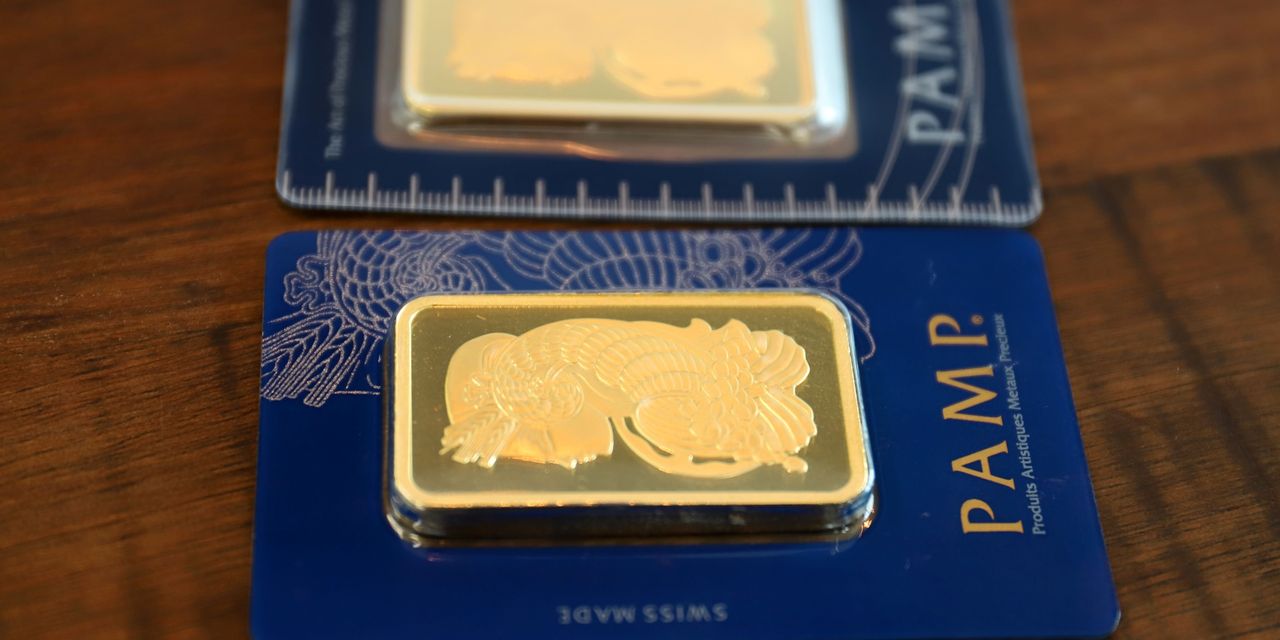
Gold prices fell from the key level of $1,900 on Thursday, as the U.S. dollar steadied and U.S. Treasury yields moved higher, dulling the metal’s investment appeal.
The correction in the gold prices is due to “month-end profit taking,” said Chintan Karnani, director of research at Insignia Consultants. “Traders booked some profit before they leave for the first mask-less vacation” in the U.S. this year.
August gold GCQ21, -0.48%, the most active contract, dropped $9, or 0.5%, to $1,894.80 an ounce. Gold futures for June delivery GCM21, -0.48%, now the second most-active contract, fell $9.50, or 0.5%, to $1,891.70 an ounce.
Prices, based on the most-active contract, still trade more than 7% higher month to date. On Wednesday, they settled atop $1,900 an ounce and turned positive for the year, a day after hitting a high near that resistance level.
Read: Why gold is headed for the largest monthly gain since July
Wednesday’s move marked the highest settlement since Jan. 7, according to FactSet data.
Gold’s rise this week had been helped by a weak U.S. dollar DXY, -0.12%, which steadied in Thursday dealings, but is down more than 1% lower for the month. A weaker dollar can make assets priced in that currency more attractive to overseas investors. A slide in the yield on the 10-year Treasury note TMUBMUSD10Y, 1.618% has also helped. Falling yields can benefit precious metals and other commodities, which don’t offer a coupon, by reducing the opportunity cost of holding those assets against yield-bearing ones.
Gold’s push through the $1,900 level inspired some hopes that gold could be entering a new bullish phase.
The “$1,900 mark clearly still holds great allure,” but the commodity faces a tough couple of days, said Carsten Fritsch, analyst at Commerzbank in a note to clients.
He said upcoming U.S. economic data have the potential to push the dollar and yields up or down, and by extension gold.
The U.S. personal consumption expenditure deflator on Friday is among those releases. That’s the “Fed’s preferred inflation measure. Recently a number of Fed representatives – among them the influential Fed Vice Chair [Richard] Clarida – had hinted that a discussion about tapering is drawing ever closer,” said Fritsch.
U.S. central bank officials may be able to begin discussing the appropriate timing of scaling back their bond-buying program at upcoming policy meetings, Federal Reserve Vice Chair Richard Clarida said on Tuesday.
Gold prices saw little reaction to Thursday’s U.S. economic data.
The U.S. economy expanded at an annualized 6.4% pace in the first quarter unrevised from the prior estimate released last month, according to the Commerce Department.
Meanwhile, initial jobless claims sank 38,000 to 406,000 in the week ended May 22, the government said Thursday — the fewest number of requests for compensation since the onset of the pandemic nearly 15 months ago. Separately, orders for durable goods slipped 1.3% last month for the first time in a year because of a semiconductor shortage.
The fall in durable goods is the reason why gold has been able to trade over $1,890, said Karnani, but investors are more focus on the May U.S. nonfarm payrolls report due out on June 4, he said.
Among other metals, July silver SIN21, -0.47% edged down by 0.5% to $27.75 an ounce, after slipping 0.6% on Wednesday.
July copper HGN21, +1.98% rose 1.9% to nearly $4.62 a pound. July platinum PLN21, -1.89% fell 1.8% to to $1,177.80 an ounce, while September palladium PAU21, +2.54% rose 2.6% to to $2,825.50 an ounce.



